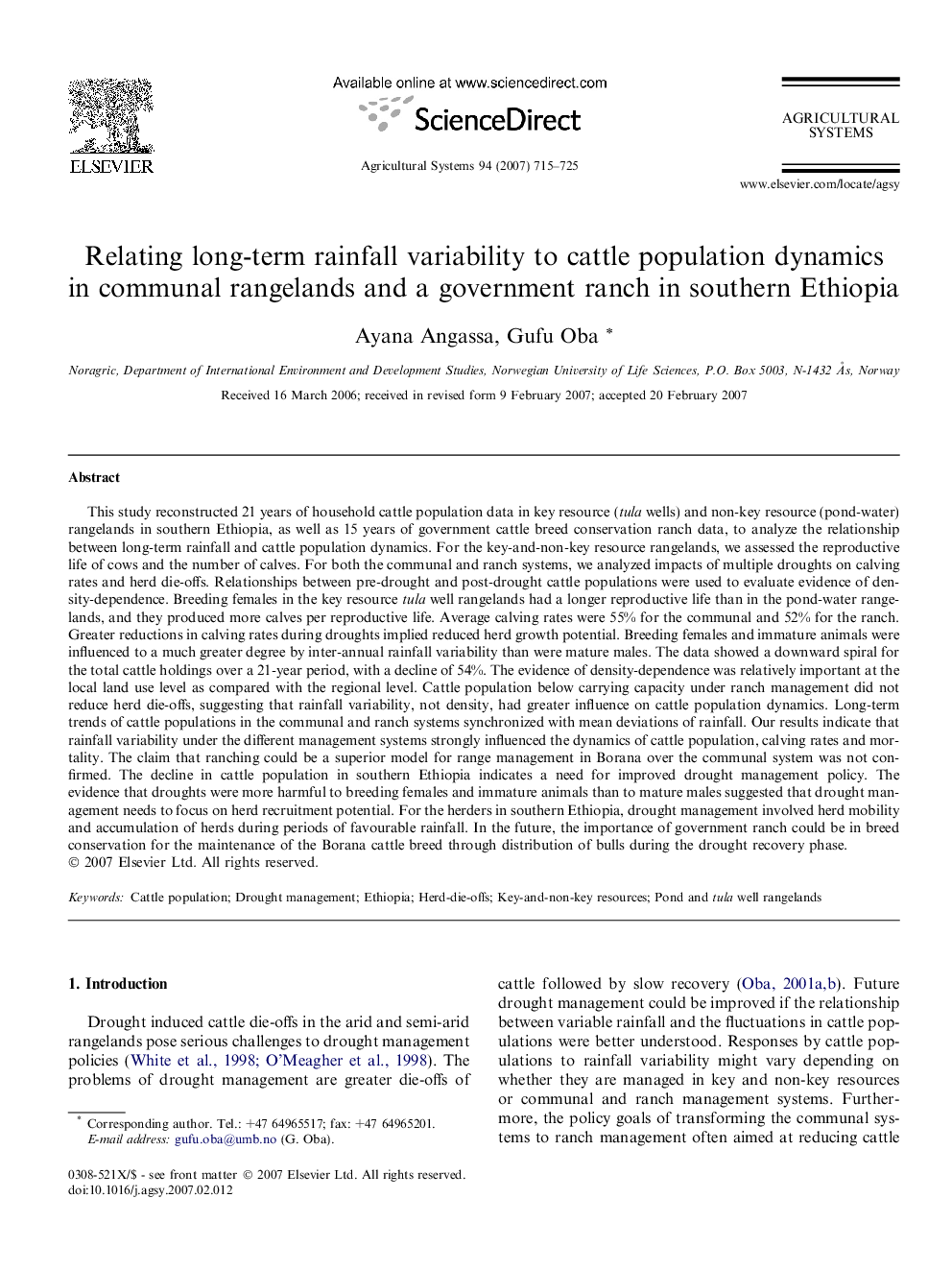| کد مقاله | کد نشریه | سال انتشار | مقاله انگلیسی | نسخه تمام متن |
|---|---|---|---|---|
| 4491809 | 1317882 | 2007 | 11 صفحه PDF | دانلود رایگان |

This study reconstructed 21 years of household cattle population data in key resource (tula wells) and non-key resource (pond-water) rangelands in southern Ethiopia, as well as 15 years of government cattle breed conservation ranch data, to analyze the relationship between long-term rainfall and cattle population dynamics. For the key-and-non-key resource rangelands, we assessed the reproductive life of cows and the number of calves. For both the communal and ranch systems, we analyzed impacts of multiple droughts on calving rates and herd die-offs. Relationships between pre-drought and post-drought cattle populations were used to evaluate evidence of density-dependence. Breeding females in the key resource tula well rangelands had a longer reproductive life than in the pond-water rangelands, and they produced more calves per reproductive life. Average calving rates were 55% for the communal and 52% for the ranch. Greater reductions in calving rates during droughts implied reduced herd growth potential. Breeding females and immature animals were influenced to a much greater degree by inter-annual rainfall variability than were mature males. The data showed a downward spiral for the total cattle holdings over a 21-year period, with a decline of 54%. The evidence of density-dependence was relatively important at the local land use level as compared with the regional level. Cattle population below carrying capacity under ranch management did not reduce herd die-offs, suggesting that rainfall variability, not density, had greater influence on cattle population dynamics. Long-term trends of cattle populations in the communal and ranch systems synchronized with mean deviations of rainfall. Our results indicate that rainfall variability under the different management systems strongly influenced the dynamics of cattle population, calving rates and mortality. The claim that ranching could be a superior model for range management in Borana over the communal system was not confirmed. The decline in cattle population in southern Ethiopia indicates a need for improved drought management policy. The evidence that droughts were more harmful to breeding females and immature animals than to mature males suggested that drought management needs to focus on herd recruitment potential. For the herders in southern Ethiopia, drought management involved herd mobility and accumulation of herds during periods of favourable rainfall. In the future, the importance of government ranch could be in breed conservation for the maintenance of the Borana cattle breed through distribution of bulls during the drought recovery phase.
Journal: Agricultural Systems - Volume 94, Issue 3, June 2007, Pages 715–725